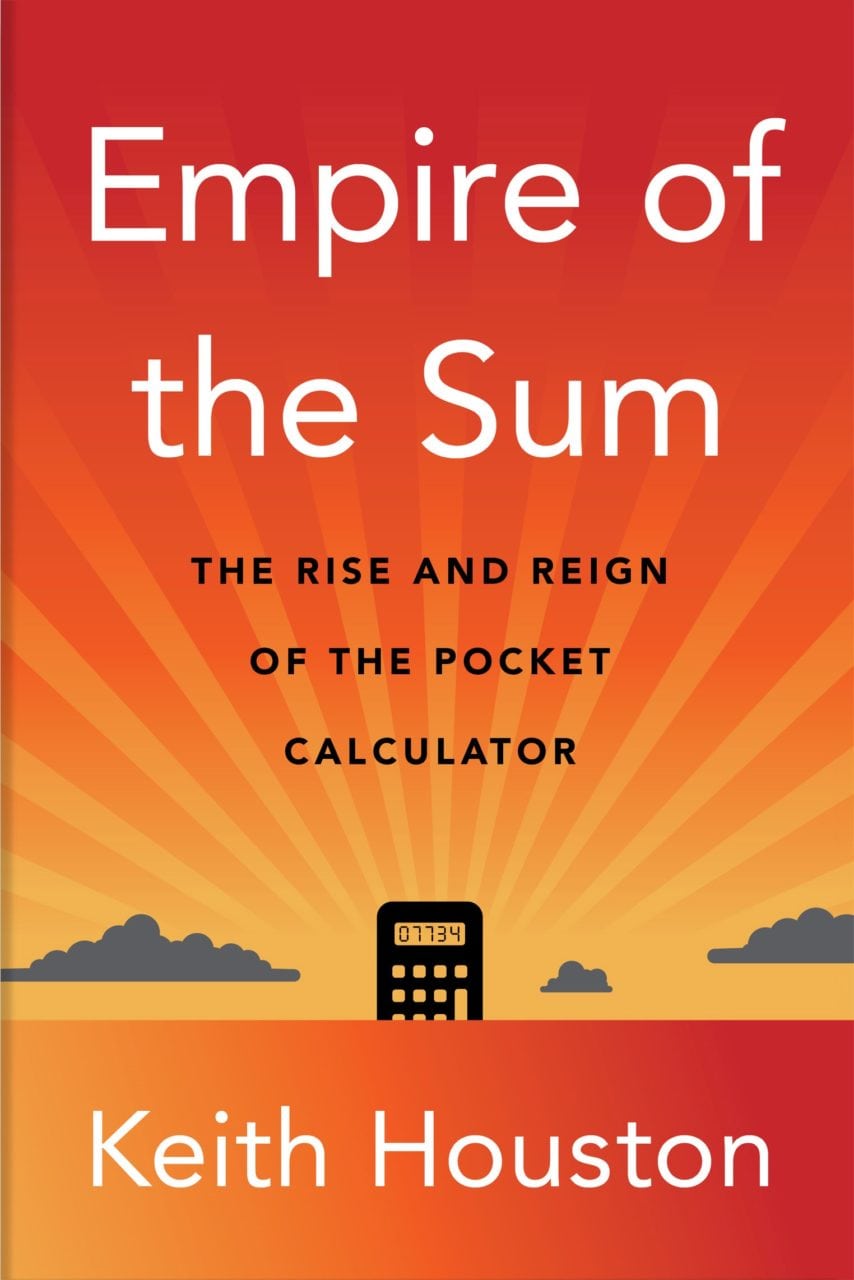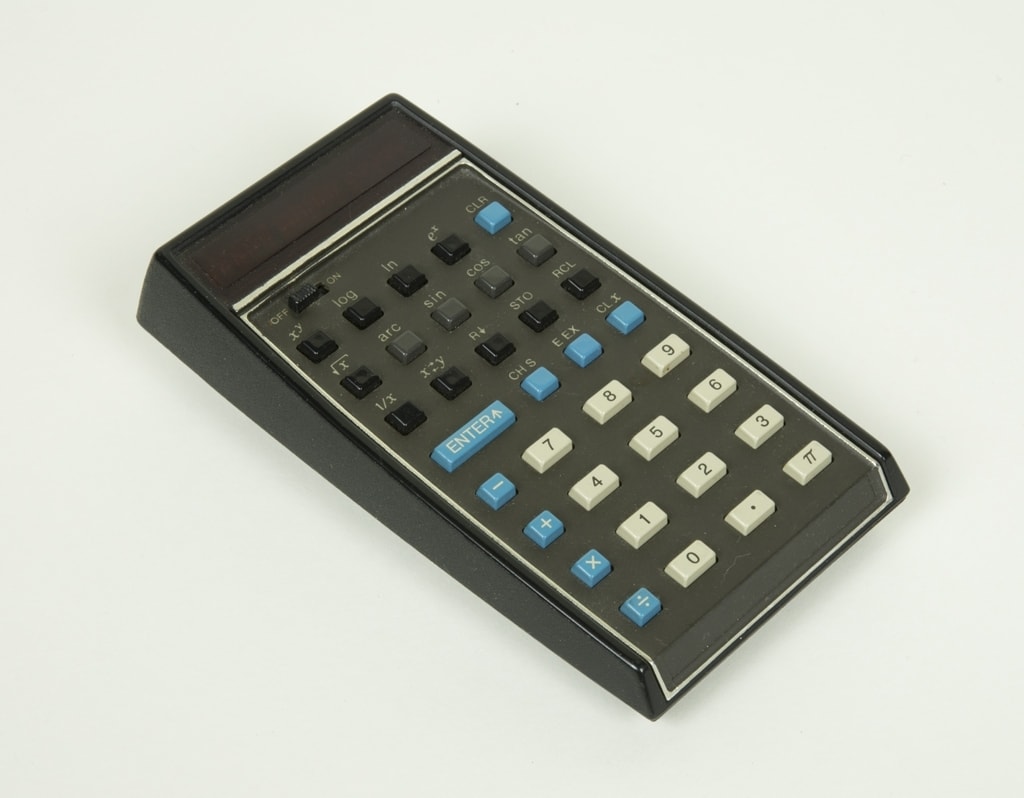It’s out! Empire of the Sum is now available in the US, and to mark the occasion I’ve been posting about a few of my favourite calculators. I’m closing this series for now with perhaps the apotheosis of 1980s calculator design: the 1981 Casio QL-10 Calculighter.
No, wait — hear me out.

If Texas Instruments is the undisputed champion of American calculator makers, Casio rules the roost in Japan and much of the rest of the world besides.* Casio was also the first calculator manufacturer to make a purely electrical calculator — that is, one that did not rely on mechanical gear trains to record and calculate — in the form of the relay-driven 14-A.
But the 14-A was not Casio’s first product. That honour goes to the yubiwa pipe: a cigarette holder soldered onto a simple finger ring, so that smokers could have a puff at work, at the onsen baths, or anywhere else they pleased, all while keeping their hands free at the same time. The success of the yubiwa pipe gave Casio’s founders, the four brothers Kashio, the financial breathing room they needed to broaden their product line.
After a series of false starts, the desk-sized 14-A made its debut in 1957. Capable of addition, subtraction, multiplication and division, it was a brash announcement of Casio’s entry into the world of automatic computing and calculating, and it was eagerly taken up by both academic and commercial customers. Another relay calculator followed, but the company never quite recaptured the 14-A’s magic, and, within a decade, Casio had lost its lead to the many transistorised calculators now being made outside Japan. (By their own admission, the Kashios had spent too much time on the golf course and not enough time in the boardroom.)
In time, though, Casio fought its way back to the top. It released calculators like 1972’s cheap, robust Casio Mini. Others, like the fx-10 of 1974, put scientific functions in an affordable package. And 1978’s Mini Card, barely larger than a credit card, pushed the boundaries of miniaturisation. By the 1980s, lightheaded with success, Casio proceeded to build a series of calculator-plus-literally-anything-else hybrids to fill ever smaller niches: there was the VL-80 calculator/synthesiser; the CQ-1 calculator/clock; the ST-1 calculator/stopwatch; the RC-1000 calculator/clock/radio; the fx-190 calculator/ruler; the MG-880 calculator/synth/videogame; and so on, almost ad infinitum.
And then, of course, there was the QL-10 Calculighter, a calculator combined with a cigarette lighter. Had this been any other calculator company, it would be have been entirely possible to deride the QL-10 as ’80s excess gone mad. But Casio alone could claim method in its madness, because it had got started not with electronic instruments, as had Hewlett-Packard; nor with geophysical surveying equipment, like Texas Instruments; nor cameras, like Canon; but rather, with the humble yubiwa cigarette holder. For Casio, the QL-10 was a homecoming.
Thanks for reading this series! I hope you’ve enjoyed it, and if you’d like to read more about the history of calculators, pocket and otherwise, this post will help you order a copy of Empire of the Sum.
If you’d like to hear more about the history of the pocket calculator first, have a listen to my chat with Dallas Campbell on the history of digital calculators. And if you’d like to win a copy of Empire, check out the giveaway for US readers!
- *
- There’s an argument that says TI owes its US crown at least in part to employing the right lobbyists, but that’s another story. ↢


